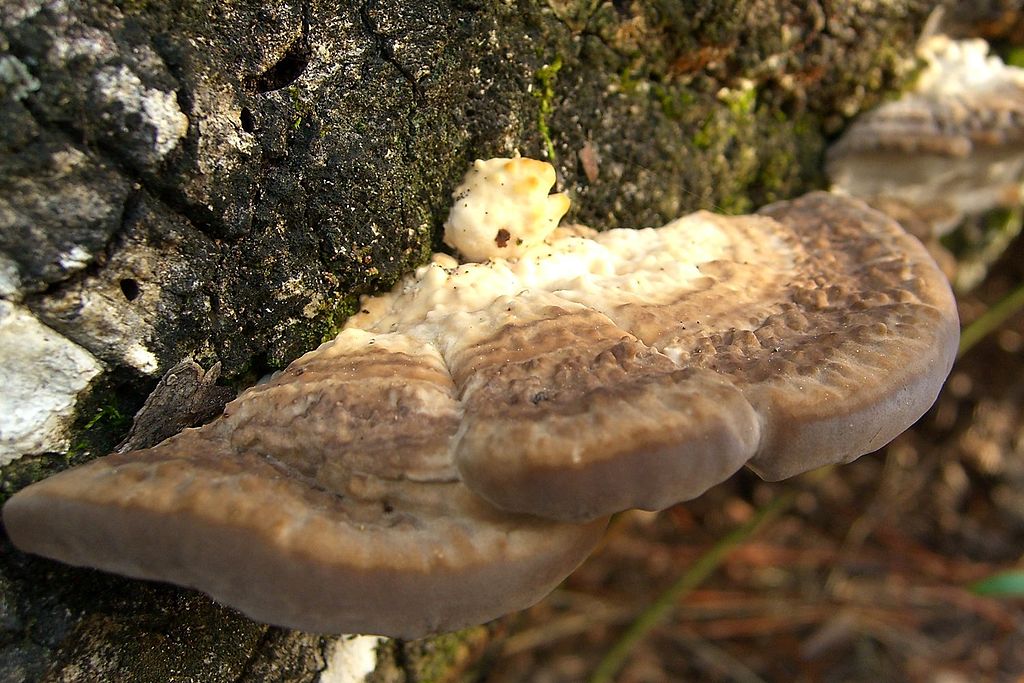Introduction
Annosum root rot, also referred to as annosus root rot, is a fungal disease of pine, spruce, and fir trees. The causal agent of the disease is the fungus, Heterobasidion annosum. The fungus was first described by Elias Magnus Fries, a Swedish mycologist and botanist, in 1821. In 1874, Robert Hartig discovered the correlation between the fungus, and the root rot disease. The fungus was initially called Polyporus annosum. It was later assigned the name Fomes annosus by H. Karsten. Finally, in 1888, Julius Oscar Brefeld, a German botanist and mycologist, renamed the fungus Heterobasidion annosum.
Heterobasidion annosum is capable of infecting a wide range of host species in forested and landscape settings. It is most problematic in areas that feature an abundance of pines. Annosum root rot is considered one of the most destructive diseases of conifers in the northern hemisphere.
Distribution & Habitat
Annosum root rot affects susceptible trees in temperate forests and landscape settings across the northern hemisphere.
Hosts
Annosum root rot generally targets pines, but it may also affect spruce and fir trees. It is particularly common on white fir. Infections occur on subalpine fir, Douglas-fir, blue spruce, and Engelmann spruce, albeit with less frequency.
Disease Cycle
Fruiting bodies called basidiocarps form on infected trees. These fruiting bodies are white around the margins, and dark brown on the upper surface. The fruiting bodies are created from mycelium, the mass that forms around the vegetative portion of the tree. In late spring and early summer, when conditions are sufficiently moist, the fruiting bodies rupture, and release conidiospores. These spores are disseminated by air currents or insects to nearby stumps, where they initiate new infections. The conidiospores produced by the fungus can reside within the soil for up to ten months. They may dwell in root systems for several years.
When the fungus makes contact with a stump, it colonizes the wood, and is transmitted into the root system via mycelium. Once the fungus has infiltrated the root system, it may infect other trees through root grafts. In forested settings, this can result in the proliferation of disease gaps, which are created when a tree succumbs to infection, and collapses. These gaps often have a profound impact on the local ecosystem, altering the habitats for plants and animals on the forest floor.
Symptoms of Infection
The first symptoms of infection are often most apparent beneath the soil. Once the fungus has infiltrated a tree’s root system, it causes abnormalities to develop in the root structure. These abnormalities inhibit the tree’s vascular system, preventing it from absorbing water and nutrients. More than half of the tree may be killed before infection symptoms become visible. As the infection progresses, the tree’s bark turns pale yellow. Eventually, the bark coloration deepens to a light brown before transitioning to white, with a speckling of irregular black dots. Resin flow may be evident at the root collar, an indication of the tree’s attempts to fend off the pathogen. Infected trees will gradually wither, before finally succumbing to the disease. In landscape settings, a ring of dead trees will gradually develop, with the oldest tree rooted in the center.
In pines, the disease is most active in the sapwood, where it eradicates healthy tissue. While decay may occur in pines, the rapid tissue death often precludes the decay process from becoming too extensive. In spruce and fir trees, the fungus grows in the root collar, often resulting in butt rot. Decay in any host may be preceded by a pink staining of the wood. Later, this decay is defined by pockets, or pits, that form in the wood. Small black flecks can often be observed in the more enlarged pockets. The pockets tend to be lost as the decay process renders the wood spongy, or stringy.
Conks are frequently found in moist sites around white fir. The conks may measure up a foot in diameter. The conks produced by annosum root rot may have a prominent brown cap or bracket. They may also be completely flat on the substrate. The pore surface of the conks is white, with small pores. The flesh is tan. Developing conks often emit a fresh mushroom aroma.
Management
- When planting, select trees that are resistant to annosum root rot.
- A prophylactic stump treatment can be applied immediately after infection to stifle disease progression. Prophylactic stump treatments increase the pH level of the stump to the point where the fungus is unable to survive.
- Several benign fungi are aggressive stump colonizers, and can be administered as stump top treatments to prevent the annosum root rot pathogen from becoming established in susceptible wood.
Photo courtesy of Jason Hollinger CC-by-2.0.


